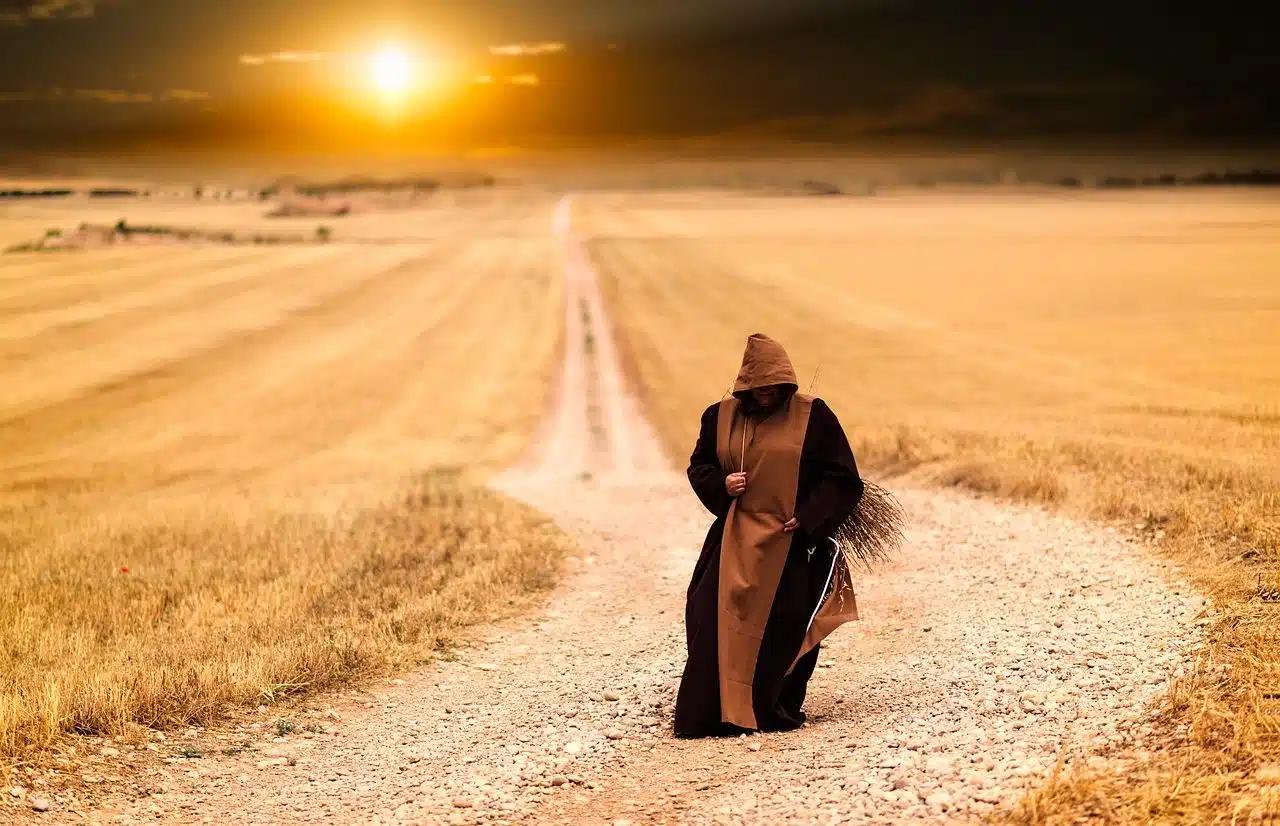
A pilgrim is called someone who makes an extensive journey to reach a sacred site.
Peregrine is a term whose etymology takes us to the Latin language ( peregrinus ). The concept is used, in its broadest sense, to name the subject who takes a tour through regions unknown to him .
For example: "I'm going to get some water to help the pilgrim," "Excuse me, could you help me?" "I am a pilgrim who does not know the area and has gotten lost," "Many pilgrims want to reach the summit of the mountain range, although few succeed."
Pilgrims in religion
The most common use, however, is linked to religion . A pilgrim is someone who decides to make an extensive trip to reach a temple or sacred place as a sign of their faith and commitment to God .
The religious idea of pilgrimage is associated with life as a path to travel . In some cases, the pilgrim is a penitent who begins his journey as a way to make amends for his faults. There are also pilgrims who carry out the journey as a promise .
In medieval times, Catholic pilgrims usually headed towards Jerusalem , Rome or Santiago de Compostela . These destinations are still maintained, especially the Spanish city, where the remains of the apostle Saint James the Greater are said to rest.
The Camino de Santiago
Throughout history , the Camino de Santiago has been traveled by dozens of important personalities, from kings to dukes, bishops and scientists. Let's look at some of the most notable names of the pilgrims who decided to embark on this special journey, some of whom did so almost a millennium ago:
- Bishop Teodomiro : This pilgrim was the one who discovered the tomb of the Apostle James , whose location is detailed in the Breviary of the Apostles, written in Latin at the end of the 6th century.
- Alfonso II the Chaste : he took on the challenge of making a pilgrimage to Santiago with the aim of building a sanctuary , after Bishop Teodomiro recommended it to him.
- Alfonso III the Great : successor of the recently mentioned king of Asturias, during his time as a pilgrim on the Camino de Santiago he erected a basilica that consisted of three naves.
- Isabella the Catholic : at the end of the 15th century, the then queen of Castile was one of the many people of great historical importance to undertake this pilgrimage.
- Ferdinand the Catholic : together with his wife, Isabel the Catholic, he ordered the construction of the Niche of the Holy Miracle of O Cebreiro, as a gift, during the mandate of Bishop Alfonso de Fonseca II.
- Charlemagne : Although there is no evidence, it is said that Charles I the Great, the king of the Franks and emperor of the West, also made a pilgrimage to Santiago de Compostela.
- Aymeric Picaud – a 12th-century Benedictine monk who lived in the French commune of Parthenay. His contribution as a pilgrim was extremely important, especially for the Camino de Santiago, since he wrote the first pilgrim's guide . Throughout his pilgrimage, which he carried out on horseback, he visited many Christian sanctuaries and detailed his routes, describing the towns and roads he met and including anecdotes that help the reader to feel closely the experiences that the cleric lived thanks to the work of his faithful equine friend, a circumstantial pilgrim if there ever was one.

The peregrine falcon is a species of bird.
Peregrine birds
Peregrine birds , on the other hand, are those species that move from one region to another in search of food or appropriate climatic conditions for their reproduction and subsistence. An example of a peregrine bird is the swallow.
The peregrine falcon , finally, is a bird whose scientific name is Falco peregrinus . This animal stands out for its speed when hunting, reaching three hundred kilometers per hour in a dive.
